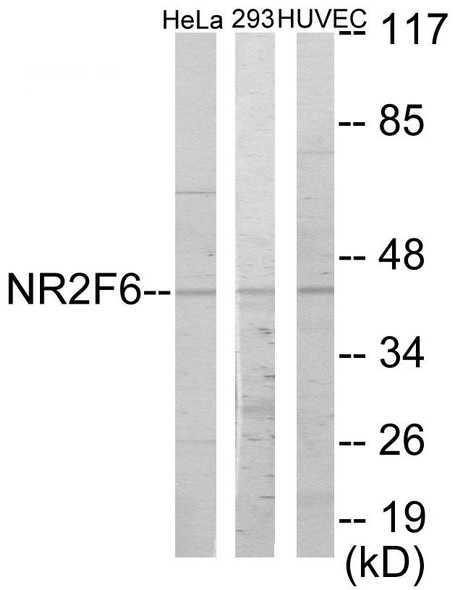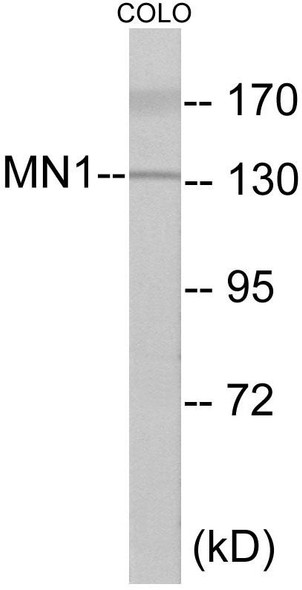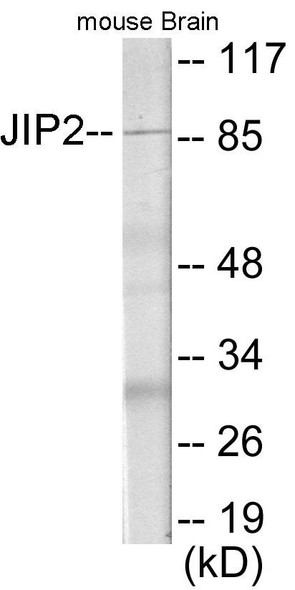TSC22D1 Colorimetric Cell-Based ELISA (CBCAB01115)
- SKU:
- CBCAB01115
- Product Type:
- ELISA Kit
- ELISA Type:
- Cell Based
- Research Area:
- Epigenetics and Nuclear Signaling
- Reactivity:
- Human
- Mouse
- Rat
- Detection Method:
- Colorimetric
Description
TSC22D1 Colorimetric Cell-Based ELISA
The TSC22D1 Colorimetric Cell-Based ELISA Kit offered by Assay Genie is specifically designed for the accurate detection of TSC22D1 levels in cell lysates and tissue homogenates. This kit provides high sensitivity and specificity, ensuring reliable and reproducible results for your research needs. TSC22D1, also known as Glucocorticoid-Induced Leucine Zipper (GILZ), is a transcriptional regulator that plays a crucial role in various cellular processes, including inflammation, immune response, and cell growth.
Detecting TSC22D1 levels can provide valuable insights into the mechanisms underlying these processes and their implications in disease states. Whether you are studying the role of TSC22D1 in cancer, autoimmune disorders, or other conditions, the TSC22D1 Colorimetric Cell-Based ELISA Kit from Assay Genie is an essential tool for your research endeavors. Experience the reliability and accuracy of this kit for yourself and advance your research with confidence.
| Product Name: | TSC22D1 Colorimetric Cell-Based ELISA |
| Product Code: | CBCAB01115 |
| ELISA Type: | Cell-Based |
| Target: | TSC22D1 |
| Reactivity: | Human, Mouse, Rat |
| Dynamic Range: | > 5000 Cells |
| Detection Method: | Colorimetric 450 nmStorage/Stability:4°C/6 Months |
| Format: | 96-Well Microplate |
The TSC22D1 Colorimetric Cell-Based ELISA Kit is a convenient, lysate-free, high throughput and sensitive assay kit that can detect TSC22D1 protein expression profile in cells. The kit can be used for measuring the relative amounts of TSC22D1 in cultured cells as well as screening for the effects that various treatments, inhibitors (ie siRNA or chemicals), or activators have on TSC22D1.
Qualitative determination of TSC22D1 concentration is achieved by an indirect ELISA format. In essence, TSC22D1 is captured by TSC22D1-specific primary antibodies while the HRP-conjugated secondary antibodies bind the Fc region of the primary antibody. Through this binding, the HRP enzyme conjugated to the secondary antibody can catalyze a colorimetric reaction upon substrate addition. Due to the qualitative nature of the Cell-Based ELISA, multiple normalization methods are needed:
| 1. | A monoclonal antibody specific for human GAPDH is included to serve as an internal positive control in normalizing the target absorbance values. |
| 2. | Following the colorimetric measurement of HRP activity via substrate addition, the Crystal Violet whole-cell staining method may be used to determine cell density. After staining, the results can be analysed by normalizing the absorbance values to cell amounts, by which the plating difference can be adjusted. |
| Database Information: | Gene ID: 8848, UniProt ID: Q15714, OMIM: 607715, Unigene: Hs.507916 |
| Gene Symbol: | TSC22D1 |
| Sub Type: | None |
| UniProt Protein Function: | TSC22D1: Transcriptional repressor. Acts on the C-type natriuretic peptide (CNP) promoter. Belongs to the TSC-22/Dip/Bun family. 3 isoforms of the human protein are produced by alternative splicing. |
| UniProt Protein Details: | Protein type:DNA-binding; Transcription factor Chromosomal Location of Human Ortholog: 13q14 Cellular Component: cytoplasm; nucleus Molecular Function:protein binding; transcription factor activity Biological Process: transcription from RNA polymerase II promoter; regulation of transcription, DNA-dependent; positive regulation of apoptosis; positive regulation of cell proliferation; negative regulation of apoptosis |
| NCBI Summary: | This gene encodes a member of the TSC22 domain family of leucine zipper transcription factors. The encoded protein is stimulated by transforming growth factor beta, and regulates the transcription of multiple genes including C-type natriuretic peptide. The encoded protein may play a critical role in tumor suppression through the induction of cancer cell apoptosis, and a single nucleotide polymorphism in the promoter of this gene has been associated with diabetic nephropathy. Alternatively spliced transcript variants encoding multiple isoforms have been observed for this gene. [provided by RefSeq, Aug 2011] |
| UniProt Code: | Q15714 |
| NCBI GenInfo Identifier: | 334302874 |
| NCBI Gene ID: | 8848 |
| NCBI Accession: | Q15714.3 |
| UniProt Secondary Accession: | Q15714,O00666, Q6AHX5, Q6IBU1, Q8NCN1, Q96JS5, B3KRL7 B9EGI0, |
| UniProt Related Accession: | Q15714 |
| Molecular Weight: | 58,859 Da |
| NCBI Full Name: | TSC22 domain family protein 1 |
| NCBI Synonym Full Names: | TSC22 domain family, member 1 |
| NCBI Official Symbol: | TSC22D1 |
| NCBI Official Synonym Symbols: | Ptg-2; TSC22; TGFB1I4 |
| NCBI Protein Information: | TSC22 domain family protein 1; cerebral protein 2; regulatory protein TSC-22; TGFbeta-stimulated clone 22; TGFB-stimulated clone 22 homolog; transcriptional regulator TSC-22; transforming growth factor beta-stimulated protein TSC-22; transforming growth factor beta-1-induced transcript 4 protein |
| UniProt Protein Name: | TSC22 domain family protein 1 |
| UniProt Synonym Protein Names: | Cerebral protein 2; Regulatory protein TSC-22; TGFB-stimulated clone 22 homolog; Transforming growth factor beta-1-induced transcript 4 protein |
| Protein Family: | TSC22 domain family protein |
| UniProt Gene Name: | TSC22D1 |
| UniProt Entry Name: | T22D1_HUMAN |
| Component | Quantity |
| 96-Well Cell Culture Clear-Bottom Microplate | 2 plates |
| 10X TBS | 24 mL |
| Quenching Buffer | 24 mL |
| Blocking Buffer | 50 mL |
| 15X Wash Buffer | 50 mL |
| Primary Antibody Diluent | 12 mL |
| 100x Anti-Phospho Target Antibody | 60 µL |
| 100x Anti-Target Antibody | 60 µL |
| Anti-GAPDH Antibody | 60 µL |
| HRP-Conjugated Anti-Rabbit IgG Antibody | 12 mL |
| HRP-Conjugated Anti-Mouse IgG Antibody | 12 mL |
| SDS Solution | 12 mL |
| Stop Solution | 24 mL |
| Ready-to-Use Substrate | 12 mL |
| Crystal Violet Solution | 12 mL |
| Adhesive Plate Seals | 2 seals |
The following materials and/or equipment are NOT provided in this kit but are necessary to successfully conduct the experiment:
- Microplate reader able to measure absorbance at 450 nm and/or 595 nm for Crystal Violet Cell Staining (Optional)
- Micropipettes with capability of measuring volumes ranging from 1 µL to 1 ml
- 37% formaldehyde (Sigma Cat# F-8775) or formaldehyde from other sources
- Squirt bottle, manifold dispenser, multichannel pipette reservoir or automated microplate washer
- Graph paper or computer software capable of generating or displaying logarithmic functions
- Absorbent papers or vacuum aspirator
- Test tubes or microfuge tubes capable of storing ≥1 ml
- Poly-L-Lysine (Sigma Cat# P4832 for suspension cells)
- Orbital shaker (optional)
- Deionized or sterile water
*Note: Protocols are specific to each batch/lot. For the correct instructions please follow the protocol included in your kit.
| Step | Procedure |
| 1. | Seed 200 µL of 20,000 adherent cells in culture medium in each well of a 96-well plate. The plates included in the kit are sterile and treated for cell culture. For suspension cells and loosely attached cells, coat the plates with 100 µL of 10 µg/ml Poly-L-Lysine (not included) to each well of a 96-well plate for 30 minutes at 37°C prior to adding cells. |
| 2. | Incubate the cells for overnight at 37°C, 5% CO2. |
| 3. | Treat the cells as desired. |
| 4. | Remove the cell culture medium and rinse with 200 µL of 1x TBS, twice. |
| 5. | Fix the cells by incubating with 100 µL of Fixing Solution for 20 minutes at room temperature. The 4% formaldehyde is used for adherent cells and 8% formaldehyde is used for suspension cells and loosely attached cells. |
| 6. | Remove the Fixing Solution and wash the plate 3 times with 200 µL 1x Wash Buffer for five minutes each time with gentle shaking on the orbital shaker. The plate can be stored at 4°C for a week. |
| 7. | Add 100 µL of Quenching Buffer and incubate for 20 minutes at room temperature. |
| 8. | Wash the plate 3 times with 1x Wash Buffer for 5 minutes each time. |
| 9. | Add 200 µL of Blocking Buffer and incubate for 1 hour at room temperature. |
| 10. | Wash 3 times with 200 µL of 1x Wash Buffer for 5 minutes each time. |
| 11. | Add 50 µL of 1x primary antibodies (Anti-TSC22D1 Antibody and/or Anti-GAPDH Antibody) to the corresponding wells, cover with Parafilm and incubate for 16 hours (overnight) at 4°C. If the target expression is known to be high, incubate for 2 hours at room temperature. |
| 12. | Wash 3 times with 200 µL of 1x Wash Buffer for 5 minutes each time. |
| 13. | Add 50 µL of 1x secondary antibodies (HRP-Conjugated AntiRabbit IgG Antibody or HRP-Conjugated Anti-Mouse IgG Antibody) to corresponding wells and incubate for 1.5 hours at room temperature. |
| 14. | Wash 3 times with 200 µL of 1x Wash Buffer for 5 minutes each time. |
| 15. | Add 50 µL of Ready-to-Use Substrate to each well and incubate for 30 minutes at room temperature in the dark. |
| 16. | Add 50 µL of Stop Solution to each well and read OD at 450 nm immediately using the microplate reader. |
(Additional Crystal Violet staining may be performed if desired – details of this may be found in the kit technical manual.)






